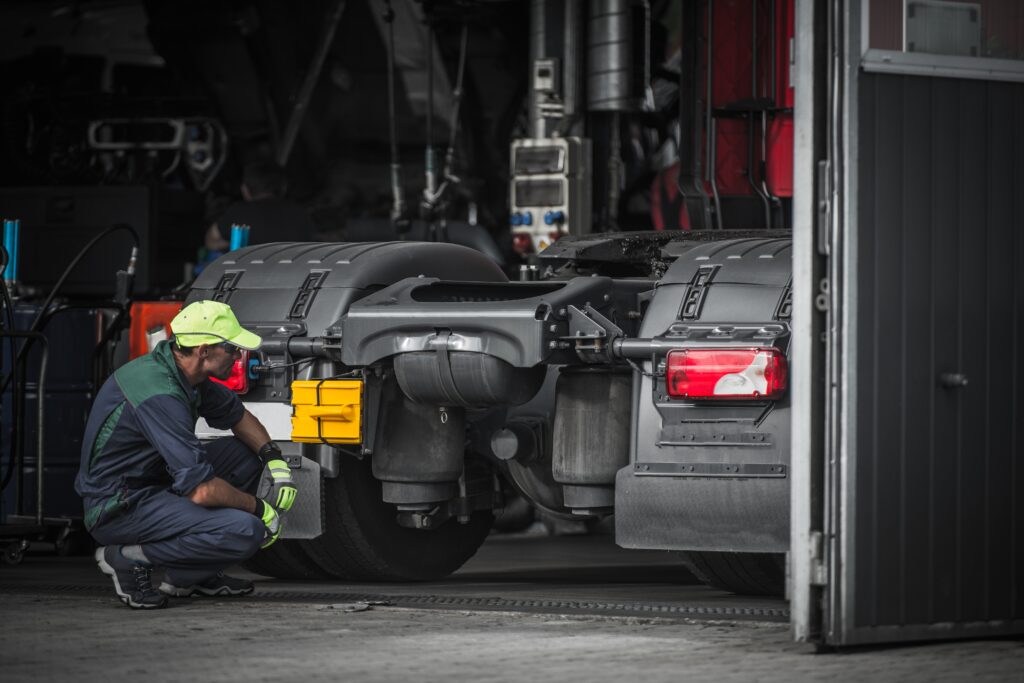Efficient transportation keeps the supply chain running smoothly. However, safety should always be the top priority for truck drivers. A pre-trip truck inspection checklist is your best friend for ensuring your journey is safe and trouble-free.
This article will delve into the essentials of a pre-trip truck inspection and why it’s imperative. We will also tell you how using FAT FINGER to digitize your truck inspection procedures will help you to stay organized and compliant.
A Step-By-Step Guide to Pre-Trip Inspection

Before diving into the pre-trip inspection, ensure you have the right tool to conduct the procedure. If you usually use a truck inspection form in PDF to document your inspections, consider having the checklist digitally available on FAT FINGER.
You can ensure the following by implementing digital procedures with FAT FINGER:
- Data accuracy
- Ensure there are no gaps or oversights in the inspection
- Make it easy for teams to collaborate on inspections
- Allow supervisors to monitor the process in real-time and provide guidance
That said, below are pre-trip inspection activities to include in your FAT FINGER vehicle inspection workflow.
Step 1 – Exterior Inspection
Start by inspecting the following areas on the exterior of your truck:
Tires: Ensure they are inflated and have sufficient tread.
Lights: Test all lights, including headlights, taillights, and turn signals.
Mirrors: Adjust and clean your mirrors for optimal visibility.
Brakes: Inspect the condition of brake pads and lines.
Wipers: Ensure wipers are functional for adverse weather conditions.
Step 2 – Inspect the Engine Compartment
Pop the hood and inspect the following in the engine compartment:
Fluid Levels: Check oil, coolant, and other fluid levels.
Belts and Hoses: Look for wear and tear.
Battery: Ensure it’s secure and charged.
Step 3 – Cab Inspection
Inside the cab, assess the following:
Seatbelt: Confirm it latches securely.
Controls: Test all controls, including steering and brakes.
Dashboard Lights: Ensure no warning lights are illuminated.
Step 4 – Trailer Inspection
If you’re pulling a trailer, inspect it as well by checking the following:
Coupling: Check the connection between the truck and trailer.
Doors: Ensure they open, close, and latch properly.
Cargo: Examine the load to confirm it’s secure and evenly distributed.

Step 5 – Documentation Check
Always carry essential documents, including your license, registration, and proof of insurance. Ensure they are up-to-date.
Step 6 – Test Drive
Before you hit the road, take your truck for a short test drive to evaluate its performance. Listen for any unusual sounds or vibrations, and pay attention to how it handles.
The Significance of a Pre-Trip Truck Inspection

Before hitting the road, conducting a comprehensive pre-trip truck inspection is a non-negotiable task for every truck driver. This practice serves multiple purposes, including:
1. Safety Assurance
Your safety and that of other road users are paramount. A pre-trip inspection helps identify potential issues that could compromise safety, allowing you to address them before embarking on your journey.
Before you start your engine, consider the critical components that ensure your safety on the road. Pay close attention to the following:
Tires: Inspect the tires for adequate tread and proper inflation. Check for any signs of damage or wear. Properly inflated and well-maintained tires are essential for stability and traction.
Lights: Test all the lights on your truck, including headlights, taillights, brake lights, and turn signals. Ensure they work correctly to make your vehicle visible to others on the road, especially during low light conditions.
Mirrors: Adjust and clean your mirrors to provide the best possible visibility. Properly positioned mirrors reduce blind spots, enhancing your awareness of the traffic around your truck.
Brakes: Examine the condition of your brake pads and brake lines. Ensure that your braking system is in top shape, as it is crucial for both your safety and the safety of others.
Wipers: Functional wipers are essential for maintaining a clear view in adverse weather conditions. Replace the wiper blades showing signs of wear and fill the wiper fluid reservoir.
2. Compliance
Meeting regulatory standards is crucial in the trucking industry. A thorough inspection ensures you comply with safety regulations, preventing costly fines and penalties. Ensure that you have a dot truck inspection checklist readily available to guide you through the necessary steps.
To maintain compliance, ensure that your truck adheres to all relevant regulations:
- Check the weight limits for your truck and trailer, and ensure that you’re not exceeding legal weight restrictions.
- Inspect your truck for emissions compliance, ensuring it meets the required environmental standards.
- Verify that all safety equipment, such as fire extinguishers and reflective triangles, is on board and working.
Keep up-to-date records of your inspections and maintenance, as they are essential for regulatory purposes. Sign up for FAT FINGER today and start keeping digital records of your inspections and maintenance procedures.

3. Reduced Downtime
Identifying and rectifying issues before they escalate can significantly reduce unplanned downtime, ensuring that you meet delivery deadlines consistently. By having a well-organized truck inspection report, you can streamline your maintenance process and minimize disruptions.
To minimize downtime and keep your truck running smoothly:
- Schedule regular maintenance and adhere to it diligently.
- Keep a spare tire, jack, and essential tools on board for quick repairs in case of minor issues.
- Familiarize yourself with your truck’s manual, which guides maintenance schedules and procedures.
4. Cost Savings

Preventive maintenance and early issue detection can save you from costly repairs and replacements down the road.
To save on maintenance costs, consider these practices:
- Invest in high-quality parts and components to reduce the risk of frequent breakdowns.
- Regularly check and change the oil and other fluids like coolant to keep the engine running smoothly and extend its lifespan.
Conduct routine checks on belts and hoses, as worn or damaged components can lead to significant repair expenses.
- Ensure your battery is secure and well-maintained to prevent unexpected failures.
Maintaining organized records of your maintenance activities is critical to saving costs. For better record management, consider importing your truck inspection form PDF into FAT FINGER to make it digitally available.
Build a pre-trip truck inspection checklist today and:
- Ensure that your truck is in optimal condition before every journey to
- Reduce downtime, save on maintenance costs, and keep the wheels of commerce rolling smoothly.
- Be safer on the road, compliant, and efficient.


